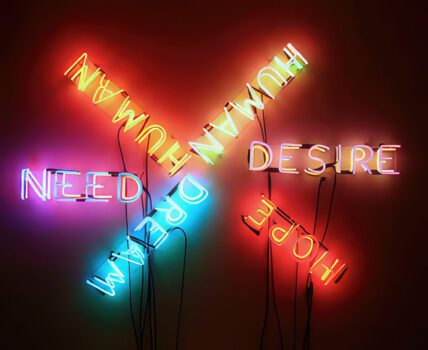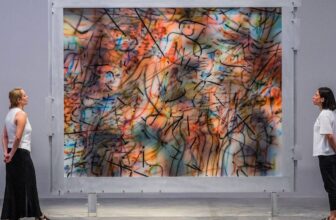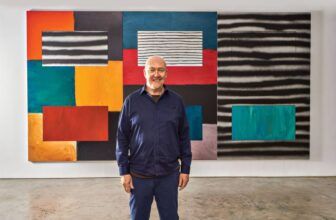What Was Bruce Nauman Known For
In the cool hush of a minimalist gallery in New York City, a single flickering neon sign buzzes with ambiguous urgency. It reads: “The True Artist Helps the World by Revealing Mystic Truths.” The piece is disarming, not just in its stark simplicity, but in its ability to make you stop, wonder, and question everything you thought you knew about art.
That’s Bruce Nauman for you.
A sculptor. A provocateur. A poet of space and silence. Bruce Nauman is one of the most important, and often misunderstood, figures in contemporary American art. With a career that spans six decades, Nauman has pushed boundaries in ways few artists dare, challenging our very understanding of what art is, how it functions, and why it matters. His work is cryptic, cerebral, and intensely personal, and its value, both cultural and commercial, has risen accordingly.
Who Is Bruce Nauman?
Born in 1941 in Fort Wayne, Indiana, Bruce Nauman initially studied mathematics and physics before turning to art. This early exposure to analytical thinking would later permeate his creative philosophy, conceptual rigor underscoring every experiment in medium and message.
Nauman rose to prominence in the late 1960s, a time when the art world was in upheaval. Minimalism, Pop Art, and Conceptual Art were redefining traditional aesthetics. But even among these revolutionary movements, Nauman stood apart. His art wasn’t about beauty or decoration, it was about confrontation, discomfort, and inquiry.
He once famously stated:
“If I was an artist and I was in the studio, then whatever I was doing in the studio must be art.”
It was a radical declaration at the time, and still is. This statement encapsulated a shift from object-based art to process-based practice. The artist’s actions, thoughts, and surroundings became part of the artwork itself.
Bruce Nauman is known for pioneering a multidisciplinary approach to art that includes sculpture, video, performance, installation, drawing, and neon work. But more than his use of media, it is his intellectual rigor and conceptual depth that define his career.
Video and Performance Art
In the late 1960s, Nauman began recording himself in his studio performing mundane or absurd tasks. Works like “Walking in an Exaggerated Manner Around the Perimeter of a Square” (1967–68) reduced art to simple acts, turning the body into both subject and medium. These videos stripped away narrative and spectacle, forcing viewers into meditative confrontation with time, repetition, and presence.
Neon and Language
Language became another material for Nauman. In his neon works, he played with ambiguity and irony. Neon signs, often associated with commercial messages, were subverted to carry poetic, confusing, or contradictory statements like “Run From Fear, Fun From Rear”. The use of neon wasn’t just aesthetic, it was symbolic. It blurred the line between the everyday and the esoteric.
Installations and Psychological Spaces
Nauman’s installations are immersive, disorienting environments that challenge sensory perception. One of his most infamous works, “Clown Torture” (1987), features multiple video screens of a clown in distress, trapped in repetitive cycles of anguish. The piece is unsettling, absurd, and brilliant, like much of Nauman’s oeuvre.
How Does Bruce Nauman Make His Artwork?
Nauman’s process is as varied as his materials, but it always starts with a question or idea, not an image.
He often begins in the studio, thinking, moving, experimenting. Sometimes the result is a video of himself pacing in a square; sometimes it’s a room filled with low-frequency sounds meant to unnerve the visitor. He collaborates with fabricators and engineers when needed, especially for large installations or technically demanding neon pieces.
Importantly, Nauman doesn’t make art to comfort or decorate. His process is rooted in philosophy, psychology, and the body. He reads widely, Wittgenstein, Beckett, and Heidegger have all influenced his thought, and he distills these philosophical concepts into stark, often confrontational visual forms.
There’s also a deeply personal dimension. His work reflects anxiety, repetition, failure, and the absurd, core elements of the human experience. In this way, Nauman isn’t just making art; he’s conducting existential investigations.
What Art Style Is Bruce Nauman Associated With?
Nauman defies easy categorization, but critics and scholars often associate him with:
Conceptual Art: He foregrounds ideas over traditional aesthetics.
Performance Art: He uses his body as a primary medium.
Minimalism: His early sculptures and videos often display a minimalist restraint.
Post-Minimalism: He challenges minimalism’s impersonal detachment by infusing works with emotion and psychological tension.
Installation Art: His large-scale spatial works immerse and disorient viewers.
Multimedia Art: He blends sculpture, sound, video, language, and architecture.
What unites these styles in Nauman’s practice is a commitment to destabilizing perception. He wants viewers to feel something unexpected, whether it’s confusion, frustration, fear, or enlightenment.
How Famous Is Bruce Nauman?
In the art world, Bruce Nauman is a titan.
He has exhibited in every major contemporary art institution: the Museum of Modern Art (MoMA), the Guggenheim, Tate Modern, Centre Pompidou, and more. He represented the United States at the Venice Biennale twice, first in 1999, and again in 2009, when he won the prestigious Golden Lion for Best National Participation.
Critics often cite him as one of the most influential artists of the 20th and 21st centuries. Artists from Marina Abramović to Mike Kelley to Matthew Barney cite him as a primary influence.
His fame, however, doesn’t rest on popularity or social media visibility. Unlike many contemporary artists, Nauman avoids the spotlight. He lives and works in rural New Mexico, shunning art-world glamour in favor of introspective solitude. His fame is quiet but monumental, built on substance, not spectacle.
How Many Artworks Does Bruce Nauman Have?
Estimating the number of artworks Bruce Nauman has produced is challenging, due to the variety of formats and the conceptual nature of many pieces. However, over the course of his career, he has created hundreds of works, including:
Over 100 video and performance-based pieces
Dozens of neon works
Scores of installations and sculptures
Numerous drawings, prints, and text-based pieces
Institutions like MoMA, the Guggenheim, Dia Art Foundation, and the Philadelphia Museum of Art hold large selections of his work, and many more circulate in private collections and international galleries.
What Materials Does Bruce Nauman Use?
Nauman is a material polymath. He selects materials based on conceptual relevance, not aesthetic consistency. His toolkit includes:
Neon tubing and gas – for text-based light installations
Steel, fiberglass, and resin – for sculptures
Sound equipment and speakers – for auditory installations
Video and closed-circuit cameras – for performance documentation
Concrete, wood, and mirrors – for spatial installations
Ink, pencil, and graphite – for drawings and texts
His own body – often the primary medium in his performances
Each material is a vessel for an idea. A neon sign may deliver a philosophical riddle. A cramped hallway installation may evoke claustrophobia. A looping clown video may represent existential dread.
How Much Does Bruce Nauman’s Art Cost?
Bruce Nauman’s art is highly valuable and sought after by major collectors and institutions. Prices vary depending on the type of work, provenance, and edition. Some highlights:
Neon works typically sell for $500,000 to $5 million, depending on size and rarity.
Sculptures and installations can fetch $1 million to over $10 million.
Drawings and prints generally range from $50,000 to $300,000, with rarer examples exceeding that.
His video art (especially from the 1960s and 1970s) is considered groundbreaking and commands high prices, often $1 million or more.
One of his most expensive works, “One Hundred Live and Die” (1984), a towering neon installation, sold for over $9.9 million at auction. The market for his work is strong due to limited supply, institutional demand, and his towering reputation.
Major galleries like Sperone Westwater and Hauser & Wirth represent his estate, ensuring that pricing remains consistent and prestigious.
Nauman is not an artist who makes art for beauty’s sake. He makes art that questions, what it means to be human, to be alone, to speak, to move, to think. He treats the gallery as a laboratory and the viewer as an unwitting participant in an experiment.
His influence spans generations, crossing media, disciplines, and geographies. He is often described as an “artist’s artist”, respected not just for what he creates, but for how he thinks.
In the end, Bruce Nauman’s art doesn’t offer answers, it asks hard, uncomfortable questions. And that, perhaps, is the reason it endures.
Bruce Nauman’s world isn’t one of comfort or clarity. It’s a world of flickering neons, echoing footsteps, muffled screams, and endless questions. It’s a world where art is not something you merely look at, but something you experience, sometimes painfully, sometimes poetically.
His work may not hang above every collector’s fireplace, but it lives in the deeper recesses of modern culture, influencing, interrogating, haunting.
And for that, Bruce Nauman isn’t just famous. He’s essential. image/wikiart




